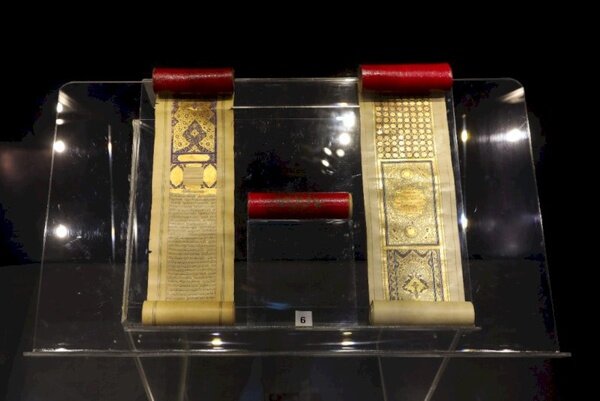Tehran exhibit showcases rare Quran manuscripts

TEHRAN – A selection of rare manuscripts of the Holy Quran, which have been calligraphed and illuminated centuries ago, has been put on display in an exhibition at the Golestan Palace in Tehran.
Written in neat, flowing Jali Naskh Script, the scroll-shaped manuscripts attributed to the Timurid ruler Bisonghor Mirza are among the highlights of the exhibition, which is underway till May 5, ILNA reported.
The exhibit is held annually during the holy month of Ramadan, which is known as “the spring of the Quran” in Islamic countries.
The earliest Quran manuscripts were produced in the mid-to-late 7th century CE (1st century Hijrah), although it is difficult to be precise about their date because ancient copies from this period have not survived intact and exist only in fragments.
Experts say the importance of these fragments cannot be overestimated as they provide the only available evidence for the early development of the written recording of the Quran text.
A destination for domestic and international travelers, Golestan Palace is located in the heart and historic core of Tehran. The palace complex is one of the oldest in the Iranian capital, originally built during the Safavid dynasty (1501–1736) in the historic walled city.
Following extensions and additions, it received its most characteristic features in the 19th century, when the palace complex was selected as the royal residence and seat of power by the Qajar ruling family (1789-1925). At present, the Golestan Palace complex consists of eight key palace structures mostly used as museums and the eponymous gardens, a green shared center of the complex, surrounded by an outer wall with gates.
As mentioned by UNESCO, the complex exemplifies architectural and artistic achievements of the Qajar era including the introduction of European motifs and styles into Persian arts.
AFM
Leave a Comment